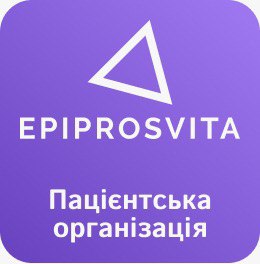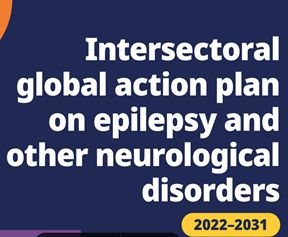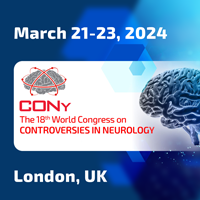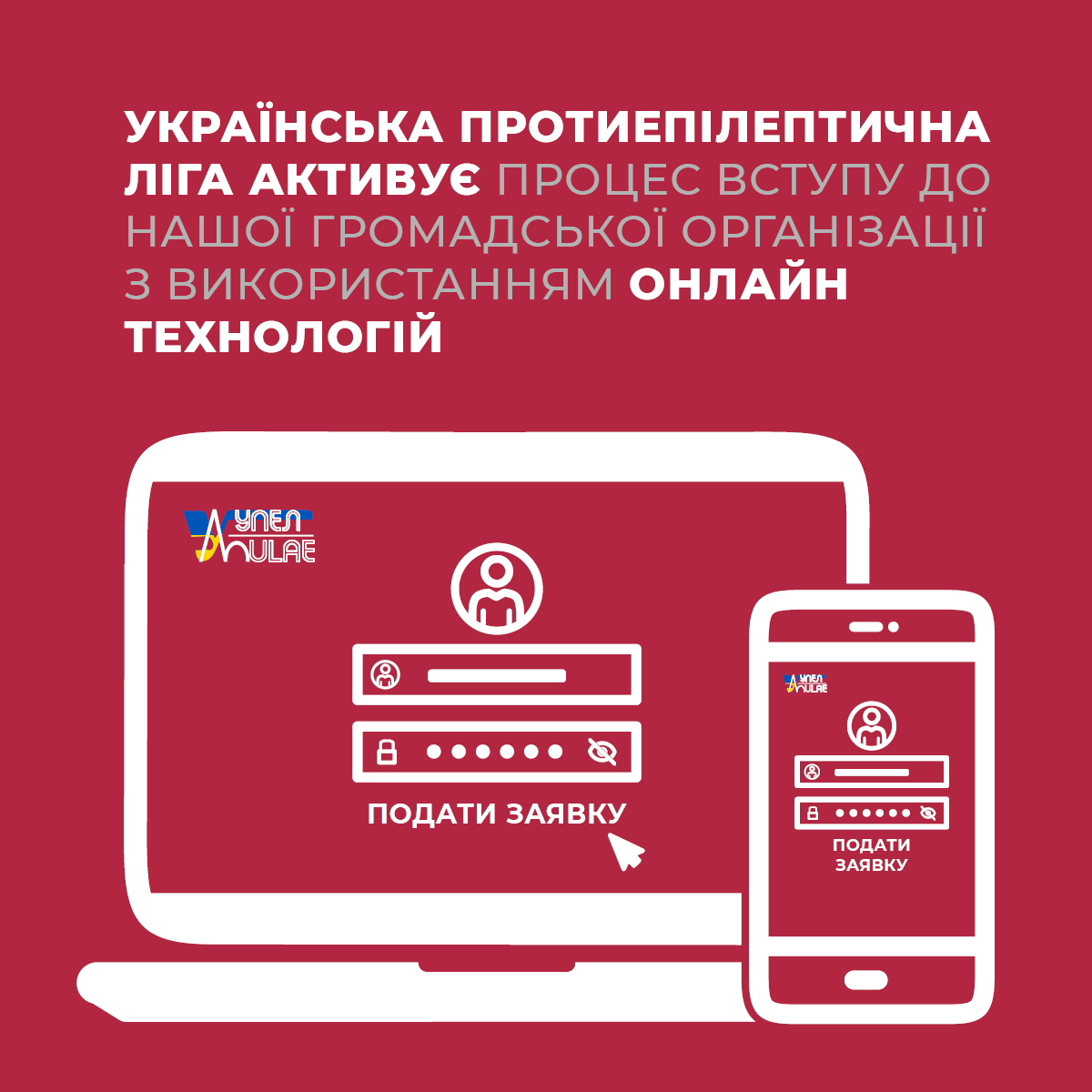Seizure 2020, Vol 82, Editor’s Choice: In the eye of the beholder: using a multi-informant approach to examine the mediating effect of cognitive function on emotional and behavioral problems in children with active epilepsy.
Epilepsies are conditions not only characterized by the seizures which define them but also by their neurobiological, cognitive and psychosocial consequences. Individual “consequences” may not be linked exclusively to epilepsy, but they are so common and their patterns so characteristic that they have been included in the definition of epilepsy (1). Although the word “consequence” implies a unidirectional relationship in which seizures are the cause, in many cases, there are bidirectional relationships between particular neurobiological, cognitive or psychosocial features and epileptic seizures. For instance, individuals with uncontrolled epilepsy are more likely to experience symptoms of depression than those whose seizures are well controlled (2). At the same time depressed individuals are more likely to have epileptic seizures (or to develop epilepsy) than those who are not (3). Having said that, the term “bi-directional” still oversimplifies these associations. As particular features do not only interact with epileptic seizures but also with each other (as well as the underlying cause of the epilepsy and its potential consequences), the relationships between different features need to be considered “multi-“ rather than “bi-” directional.
All this becomes even more complicated in children and adolescents where interactions are not limited to features associated with epileptic seizures and any underlying disease but also include features associated with neurobiological, cognitive and psychosocial brain development.
My Editor’s Choice paper from the current volume of Seizure, an original article by Tamar Silberg et al., explores some of these multifactorial interactions by describing the relationship between cognitive, emotional, behavioural and seizure-related variables in a sizable group of children and adolescents (4). Using data from a range of sources (clinical information, neuropsychological testing, parent and teacher-reports) they found that parents and teachers both reported high levels of emotional and behavioral problems, although, at group level, the cognitive profile of the sample was within the normal range. Teachers reported more emotional and behavioural problems than parents. The relationship of teachers’ assessment of emotional and behavioural problems and epilepsy-related factors (such as the number of antiseizure medications and illness duration) was mediated the children’s cognitive performance. This mediation effect was not observed in relation to parents’ reports of emotional and behavioural problems, perhaps reflecting the different situation in which parents and teachers observe children’s behavior or the more complex relationships between parents and their children. The findings could also have been influenced by negative attitudes towards epilepsy among teachers, leading to an increased perception of emotional and behavioral problems, especially in children with cognitive problems.
Whatever the reasons for the differences in the perceptions of parents and teachers, the discrepancies found in this study highlight the importance of taking full account of the sources of information about patients and the context in which the information was gathered. In order to achieve an optimal understanding of an individual’s epilepsy, its consequences and associations, and to provide optimal intervention, information from multiple sources needs to be carefully triangulated. A correlation between two features does not always mean that there is a causal link. Even when thre is a link, causation may be mediated by a third (or multiple other) factor(s).
References:
1) Fisher RS, Boas WV, Blume W, Elger C, Genton P, Lee P, Engel Jr J. Epileptic seizures and epilepsy: definitions proposed by the International League Against Epilepsy (ILAE) and the International Bureau for Epilepsy (IBE). Epilepsia 2005;46:470-2.
2) Jacoby, A., Baker, G. A., Steen, N., Potts, P., Chadwick, D. W. The clinical course of epilepsy and its psychosocial correlates: findings from a U.K. Community study. Epilepsia. 1996;37(2),148-61.
3) Hesdorffer DC, Ishihara L, Mynepalli L, Webb DJ, Weil J, Hauser WA. Epilepsy, suicidality, and psychiatric disorders: a bidirectional association. Ann Neurol 2012;72:184-91
4) Silberg T et al. In the eye of the beholder: using a multi-informant approach to examine the mediating effect of cognitive function on emotional and behavioral problems in children with active epilepsy. Seizure 2020; 82: 31-38
Seizure 2020, Том 82, Вибір редактора: «Погляд спостерігача: використання мультиінформативного підходу для вивчення опосередковуючого впливу когнітивних функцій на емоційні та поведінкові проблеми у дітей з активною епілепсією».
Епілепсії – це розлади, що характеризуються не тільки епілептичними нападами, які їх визначають, але також їх нейробіологічними, когнітивними та психосоціальними наслідками. Окремі «наслідки» можуть бути пов'язані не тільки з епілептичними нападами, вони настільки поширені і їх патерни настільки характерні, що вони були включені у визначення епілепсії (1). Хоча слово «наслідок» передбачає односторонній зв’язок, в якому напади є причиною, у багатьох випадках існують двосторонні зв’язки між певними нейробіологічними, когнітивними чи психосоціальними ознаками та епілептичними нападами. Наприклад, особи з неконтрольованою епілепсією частіше відчувають симптоми депресії, ніж ті, у кого напади добре контролюються (2). У той же час люди, які перебувають у депресії, більш схильні до епілептичних нападів (або до розвитку епілепсії), ніж ті, у кого її немає (3). Тим не менш, термін «двосторонній» все ще занадто спрощує ці асоціації. Оскільки окремі ознаки взаємодіють не тільки з епілептичними нападами, але і один з одним (а також з основною причиною епілепсії та її потенційними наслідками), відносини між різними ознаками слід розглядати як «мультинаправлені», а не «двонаправлені».
Все це ускладнюється особливо у дітей та підлітків, де взаємодія не обмежується лише ознаками, пов’язаними з епілептичними нападами та будь-яким основним захворюванням, а також включає особливості, пов’язані з нейробіологічним, когнітивним та психосоціальним розвитком мозку.
Мій вибір редактора з поточного журналу «Seizure» - оригінальна стаття Tamar Silberg et al., які досліджують деякі з цих багатофакторних взаємодій, описуючи взаємозв'язок між когнітивними, емоційними, поведінковими і пов'язаними з нападами змінами в великій групі дітей та підлітків (4). Використовуючи дані з ряду джерел (клінічна інформація, нейропсихологічне тестування, звіти батьків та вчителів), вони виявили, що і батьки, і вчителі повідомляли про високий рівень емоційних та поведінкових проблем, хоча на рівні групи когнітивний профіль вибірки знаходився в межах нормального діапазону. Вчителі більше повідомляли про емоційні та поведінкові проблеми, ніж батьки. Взаємозв'язок оцінки вчителями емоційних та поведінкових проблем та пов'язаних з епілепсією факторів (таких, як кількість протисудомних препаратів та тривалість хвороби) опосередковувався когнітивною діяльністю дітей. Цей посередницький ефект не спостерігався у звітах батьків про емоційні і поведінкові проблеми, що, можливо, відображає різну ситуацію, в якій батьки і вчителі спостерігають за поведінкою дітей або більш складними відносинами між батьками та їхніми дітьми. На висновки також могло вплинути негативне ставлення вчителів до епілепсії, що призвело до посилення сприйняття емоційних та поведінкових проблем, особливо у дітей з когнітивними проблемами.
Якими б не були причини відмінностей у сприйнятті батьків і вчителів, розбіжності, виявлені в цьому дослідженні, підкреслюють важливість повного врахування джерел інформації про пацієнтів і контексту, в якому ця інформація була зібрана. Для досягнення оптимального розуміння індивідуальної особливості епілепсії, її наслідків та асоціацій, а також для забезпечення оптимального втручання інформація з різних джерел повинна бути ретельно опрацьована. Кореляція між двома ознаками не завжди означає наявність причинно-наслідкового зв'язку. Навіть коли існує зв'язок, причинно-наслідковий зв'язок може бути опосередкований третім фактором (або кількома іншими факторами).
References:
1) Fisher RS, Boas WV, Blume W, Elger C, Genton P, Lee P, Engel Jr J. Epileptic seizures and epilepsy: definitions proposed by the International League Against Epilepsy (ILAE) and the International Bureau for Epilepsy (IBE). Epilepsia 2005;46:470-2.
2) Jacoby, A., Baker, G. A., Steen, N., Potts, P., Chadwick, D. W. The clinical course of epilepsy and its psychosocial correlates: findings from a U.K. Community study. Epilepsia. 1996;37(2),148-61.
3) Hesdorffer DC, Ishihara L, Mynepalli L, Webb DJ, Weil J, Hauser WA. Epilepsy, suicidality, and psychiatric disorders: a bidirectional association. Ann Neurol 2012;72:184-91
4) Silberg T et al. In the eye of the beholder: using a multi-informant approach to examine the mediating effect of cognitive function on emotional and behavioral problems in children with active epilepsy. Seizure 2020; 82: 31-38
Seizure 2020, Vol 81, Editor’s Choice: Antibiotic-induced epileptic seizures: mechanisms of action and clinical considerations
Like antiseizure and other medications, antibiotic drugs have a hard time getting into the brain. Orally administered preparations have to survive the acidity of the stomach, pass through the intestinal mucosa and potential first-pass metabolisation in the liver. From there, they need to get to the head and pass the blood-brain-barrier. It is perhaps not surprising that it was an attempt to overcome these hurdles that first led to the discovery of the seizure-provoking effects of penicillin very soon after this drug was first discovered: the intraventricular injection of penicillin was noted to cause myoclonic jerking (1). This discovery has been put to good use since – when penicillin is used in animal research as a precipitant for acute seizures or (with repeated administration) for epilepsy (2). However, the ictogenic and epileptogenic potential of penicillin and more recent antibiotic drugs continue to be problematic when these potentially life-saving medicines are used to treat infections in humans.
My editor’s choice paper from the current volume of Seizure by Pitchaya Wanleenuwat et al. provides a masterly overview of the different ways in which antibiotic treatment can precipitate seizures (3). The most commonly used antibiotic drugs, β-lactams and fluoroquinolones, are also the ones most closely associated with neurotoxic side effects. Directly seizure-promoting mechanisms include interference with inhibitory processes and enhancement of excitatory processes (such as gamma-aminobutyric acid (GABA) antagonism, inhibition of GABA synthesis or glutaminergic N-methyl-D-Aspartate (NMDA) receptor agonism). However other mechanisms may play an additional role, and patients with hepatic and renal insufficiencies – both the rule rather than the exception in elderly patients - are at greatest risk. Directly harmful effects of antibiotics within the brain are particularly common in clinical scenarios in which the efficacy of the blood brain barrier is reduced – for instance in infections involving the meninges. Macrolide antibiotics (clarithromycin and erythromycin) can cause neurotoxic effects (including delirium and seizures) by inhibiting the hepatic metabolism of antiepileptic drugs. Carbapenem can enhance valproate breakdown, thereby increasing the risk of seizures.
Considering the many and complex ways in which epilepsy, infections, antiseizure medications and antibiotics can interact, one wonders how often the observation of a deterioration of seizure control in an individual with epilepsy was actually due to the medicine prescribed to combat an intercurrent infection rather than the infective illness itself!
References:
1) Johnson HC, Walker AE. Intraventricular: A note of warning. JAMA 1945;127:217–9. https://doi.org/10.1001/jama.1945.92860040001007.
2) Kandratavicius L, Alves Balista P, Lopes-Aguiar C, Ruggiero RN, Umeoka EH, Garcia-Cairasco N, Bueno-Junior LS, Leite JP. Animal models of epilepsy: use and limitations. Neuropsychiatr Dis Treat. 2014;10: 1693–1705.
3) Wanleenuwat P, Suntharampillai N, Iwanowski P. Antibiotic-induced epileptic seizures: mechanisms of action and clinical considerations. Seizure 2020; 81: 167-174.
Seizure 2020, Том 81, Вибір редактора: Епілептичні напади, викликані антибіотиками: механізми дії та клінічні міркування
Подібно до протиепілептичних та інших ліків, антибіотикам важко потрапити до головного мозку. Препарати для перорального введення повинні подплати кислотність шлунка, проходити через слизову оболонку кишківника і потенційно піддаватися метаболізму при першому проходженні в печінці. Звідти їм потрібно дістатися структур головного мозку і подолати гематоенцефалічний бар'єр. Можливо, саме спроба подолати ці перешкоди вперше призвела до відкриття провокуючих судоми ефектів пеніциліну, майже відразу після того, як цей препарат був вперше виявлений: внутрішньошлуночкова ін'єкція пеніциліну викликала міоклонічні посмикування(1). З того часу пеніцилін почав використовуватися у дослідженнях на тваринах в якості провокатора чи підсилватича при гострих нападах або при епілепсії (у разі повторного застосування) (2). Однак іктогенний та епілептогенний потенціал пеніциліну і новітніх антибіотиків продовжує залишатися дискутабельним, оскільки препарати, які потенційно рятують життя, використовуються для лікування інфекцій у людей.
Мій вибір як редактора з поточного тому журналу «Seizure» – це стаття Pitchaya Wanleenuwat та ін., що надає літературний огляд різних способів, за допомогою яких лікування антибіотиками може прискорити епілептичні напади(3). Антибіотики, β-лактами і фторхінолони, які найбільш часто використовують в медичній практиці, тісно пов'язані з нейротоксичними побічними ефектами. Механізми, що безпосередньо сприяють нападам, включають втручання в процеси інгібування і посилення процесів збудження (таких як антагонізм гамма-аміномасляної кислоти (ГАМК), інгібування синтезу ГАМК або агонізм рецептора глутамінергічного N-метил-D-аспартату (NMDA)). Однак інші механізми можуть відігравати додаткову роль, і хворі з печінковою та нирковою недостатністю - як правило, так і пацієнти виключення - хворі похилого віку - піддаються найбільшому ризику. Безпосередньо шкідливі ефекти антибіотиків в мозку особливо поширені в клінічних випадках, при яких ефективність гематоенцефалічного бар'єру знижується - наприклад, при інфекціях, що пошкоджують мозкові оболонки. Макролідні антибіотики (кларитроміцин і еритроміцин) можуть викликати нейротоксичні ефекти (включаючи делірій і судоми), інгібуючи печінковий обмін протиепілептичних препаратів. Карбапенем може посилювати розпад вальпроату, тим самим, підвищуючи ризик судом.
Враховуючи численні та складні способи, за допомогою яких епілепсія, інфекції, протиепілептичні препарати та антибіотики можуть взаємодіяти, цікаво, наскільки часто спостереження за погіршенням контролю нападів у людини з епілепсією було насправді пов'язано з ліками, призначеними для боротьби з інтеркурентною інфекцією, а не з самим інфекційним захворюванням!
References:
1) Johnson HC, Walker AE. Intraventricular: A note of warning. JAMA 1945;127:217–9. https://doi.org/10.1001/jama.1945.92860040001007.
2) Kandratavicius L, Alves Balista P, Lopes-Aguiar C, Ruggiero RN, Umeoka EH, Garcia-Cairasco N, Bueno-Junior LS, Leite JP. Animal models of epilepsy: use and limitations. Neuropsychiatr Dis Treat. 2014;10: 1693–1705.
3) Wanleenuwat P, Suntharampillai N, Iwanowski P. Antibiotic-induced epileptic seizures: mechanisms of action and clinical considerations. Seizure 2020; 81: 167-174.
Seizure 2020, Vol 80, Editor’s Choice: The role of chronobiology in drug-resistance epilepsy: The potential use of a variability and chronotherapy-based individualized platform for improving the response to antiseizure drugs
For many people with epilepsy, the unpredictability of their seizures is a particularly disabling aspect of the condition. It is primarily because of this unpredictability that activities have to be restricted, certain jobs become impossible or people may not be allowed to drive a motor vehicle. However, several recent studies have demonstrated that – surprisingly often – epileptic seizures are not an entirely random occurrence. Leaving aside those who are able to identify (and avoid) particular seizure triggers, these studies suggest that the likelihood of seizure occurrence often follows a steady pattern raising the possibility that the risk of seizures could be forecast, similarly to the risk of rain. While the majority of epilepsies have been shown to be subject to some degree of diurnal variation (1), seizures stick very closely to a predictable pattern in 10 or 20% of patients (who have often not noticed this) (2).
My Editor’s Choice paper from the current issue of Seizure is an article by Assaf Potruch, Salim T. Khoury and Yaron Ilan (3). I their wide-ranging narrative review Potruch et al. initially consider the currently recognized mechanisms for the pharmacoresistance of epilepsies before exploring how natural body rhythms could be harnessed to improve the responsiveness to treatments – including the antiepileptic drugs already at our disposal today. Similarly to researchers attempting to treat currently incurable conditions with existing but repurposed drug treatments for other disorders, they propose using interventions we already have in our arsenal, but using them in a much more targeted way by observing and taking account of the natural brain and body rhythms and by avoiding potential iatrogenic effects of regular drug dosing potentially including the loss of effectiveness. Potruch et al. argue that our exisiting antiseizure treatments could be much more effective if they were delivered in a more targeted fashion, especially at precisely the time they are needed. Given that epilepsy is a highly heterogenous condition an ideal chronobiologically informed treatment would take account of a broad range of specifics characterizing a person’s epilepsy and also monitor their brain and body rhythms. Some of these ideas are not new but the closed-loop deep brain stimulation systems now used routinely in some countries contain the technology that makes the detection of the rhythms which co-determine the timing of seizures much more feasible. Perhaps this technology could be repurposed to administer individually optimized pharmacological treatments in the future.
References:
1) Quigg M. Circadian rhythms: interactions with seizures and epilepsy. Epilepsy Res 2000;42:43-55
2) Karoly PJ, Goldenholz DM, Freestone DR, et al. Circadian and circaseptan rhythms in human epilepsy: a retrospective cohort study. Lancet Neurol 2018;17:977-85.
3) Potruch A, Khoury ST, Ilan Y. The role of chronobiology in drug-resistance epilepsy: The potential use of a variability and chronotherapy-based individualized platform for improving the response to antiseizure drugs. Seizure 2020; 80: 201-211
Seizure 2020, Том 80, Вибір редактора: Роль хронобіології у у лікуванні фармакорезистентної епілепсії: потенційне використання варіабельності та індивідуалізованої платформи на основі хронотерапії для покращення реакції на антиепілептичні препарати
Для багатьох людей з епілепсією непередбачуваність їх нападів є особливо неприємним аспектом стану. Передусім через цю непередбачуваність потрібно обмежувати діяльність, певні професії забороняються, таким людям не дозволяють керувати автотранспортом. Однак кілька недавніх досліджень показали, що епілептичні напади – на подив часто – не є повністю випадковим явищем. Залишаючи осторонь тих, хто здатний виявити (і уникнути) конкретних тригерів нападів, ці дослідження припускають, що ймовірність виникнення нападів часто слідує стійкій схемі, що збільшує можливість прогнозування ризику нападів, аналогічно ризику дощу. Хоча було показано, що більшість епілепсій піддаються деякій мірі добової варіабельності (1), напади дуже близькі до передбачуваного патерну у 10% або 20% пацієнтів (які часто цього не помічали) (2).
Мій редакційний вибір з поточного журналу «Напад» - це стаття Assaf Potruch, Salim T. Khoury та Yaron Ilan (3). У їх широкому огляді спочатку були розглянуті відомі на даний момент механізми фармакорезистентності епілепсії, перш ніж вивчити, як природні ритми тіла можна використати для покращення чутливості до методів лікування - включаючи антиепілептичні препарати, які вже є у нас в розпорядженні. Подібно дослідникам, які намагаються лікувати у даний час невиліковні стани за допомогою існуючих, але перепрофільованих медикаментозних методів лікування інших розладів, вони пропонують використовувати втручання, які вже є в нашому арсеналі, але використовувати їх набагато більш цілеспрямовано, спостерігаючи і беручи до уваги природні ритми мозку і тіла та уникаючи потенційних ятрогенних ефектів регулярного дозування ліків, потенційно включаючи втрату ефективності. Potruch та співавт. стверджують, що наші існуючі антиепілептичні методи лікування могли б бути набагато більш ефективними, якби вони здійснювалися більш цілеспрямовано, особливо в той час, коли вони необхідні. Враховуючи, що епілепсія є вкрай гетерогенним станом, ідеальне хронобіологічне обґрунтоване лікування повинно враховувати широкий спектр особливостей, що характеризують епілепсію у людини, а також контролюють його мозкові і тілесні ритми. Деякі з цих ідей не є новими, але системи глибокої стимуляції мозку із замкнутим циклом, які зараз використовуються в деяких країнах в рутинній практиці, містять технологію, яка робить виявлення ритмів, що визначають час нападів, набагато більш можливим. Можливо, в майбутньому цю технологію можна буде використовувати для проведення індивідуально оптимізованих фармакологічних втручаннь.
References:
1) Quigg M. Circadian rhythms: interactions with seizures and epilepsy. Epilepsy Res 2000;42:43-55
2) Karoly PJ, Goldenholz DM, Freestone DR, et al. Circadian and circaseptan rhythms in human epilepsy: a retrospective cohort study. Lancet Neurol 2018;17:977-85.
3) Potruch A, Khoury ST, Ilan Y. The role of chronobiology in drug-resistance epilepsy: The potential use of a variability and chronotherapy-based individualized platform for improving the response to antiseizure drugs. Seizure 2020; 80: 201-211





